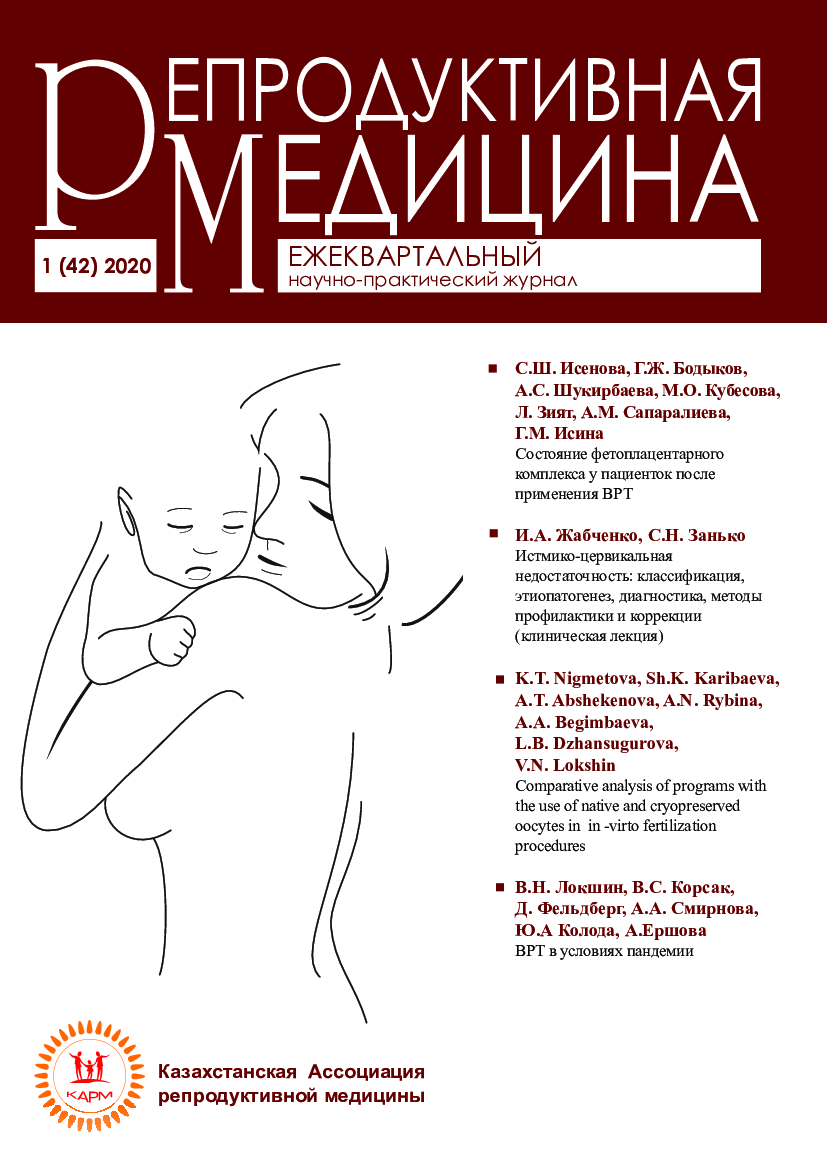Experience in applying a new approach to installing a mesh prosthesis transvaginally in surgery for genital prolapse
Keywords:
apical prolapse, cystocele, stress urinary incontinenceAbstract
The article presents a retro and prospective analysis of 173 cases of surgical treatment of genital prolapse since June 2013.
- June 2019. Their 75 of them were operated according to the concept developed by us and 92 cases of laparoscopic access for control. The new concept is to model the prosthesis intraoperatively, with a mesh size of 4 * 4 cm with a shoulder length of 10 cm on each side, which is optimal for eliminating cystocele and, in some cases, apical prolapse. The number of repeated
interventions during reposition of the pubo-cervical fascia was in 4 cases, with the development of stress urinary incontinence
de novo (5.3%, Pearson’s criterion, X² = 0.053 / P> 0.05). Vaginal mesh erosion was statistically significant in number (8 cases (10.6%), F = 0.035799 / OR = 7.88 / ξ2 = 5.02 /), however, only 6 cases had to be excised (F = 0.119886 / OR = 5.74 / ξ2 = 3.2 /
P> 0.05). Thus, the new concept of using prostheses for transvaginal treatment of prolapse can be considered effective and safe.
References
Коркан А.И. //Пролапс тазовых органов. Диагностика, хирургическая тактика //Монография//Алматы, - 2009. – 168с.
FDA Executive Summary/Surgical Mesh for Transvaginal Repair of Pelvic Organ Prolapse in the Anterior Vaginal
Compartment/Obstetrics and Gynecology Devices Panel February 12, 2019
5. Maher, C., B. Feiner, K. Baessler, C. Christmann-Schmid, N. Haya, and J. Marjoribanks, a systematic review and metaanalysis
Feb;117(2):323-43. doi: 10.1111/bju.13158. Epub 2015 Jun 11Transvaginal mesh or grafts compared with
native tissue repair for vaginal prolapse. Cochrane Database Syst Rev, 2016. 2: p. Cd012079
Matsuoka PK, Pacetta AM, Baracat EC, Haddad JM/ Should prophylactic anti-incontinence procedures be performed at the
time of prolapse repair? Systematic review/ Int Urogynecol J. 2015 Feb;26(2):187-93. doi: 10.1007/s00192-014-2537-0.
Epub 2014 Oct 28
Ward RM, Velez Edwards DR, Edwards T, Giri A, Jerome RN, Wu JM/ Genetic epidemiology of pelvic organ prolapse: a
systematic review / Am J Obstet Gynecol. 2014 Oct;211(4):326-35. doi: 10.1016/j.ajog.2014.04.006. Epub 2014 Apr 12.
Deng T., Liao B., Luo D., Shen H., Wang K. Risk factors for mesh erosion after female pelvic floor reconstructive surgery.
Additional Files
Published
How to Cite
Issue
Section
License
The articles published in this Journal are licensed under the CC BY-NC-ND 4.0 (Creative Commons Attribution – Non-Commercial – No Derivatives 4.0 International) license, which provides for their non-commercial use only. Under this license, users have the right to copy and distribute the material in copyright but are not permitted to modify or use it for commercial purposes. Full details on the licensing are available at https://creativecommons.org/licenses/by-nc-nd/4.0/.




